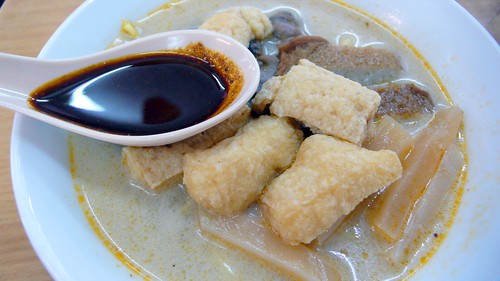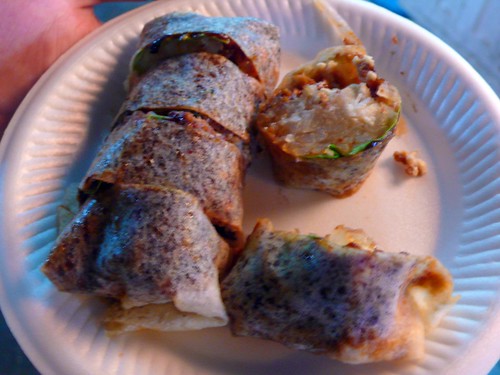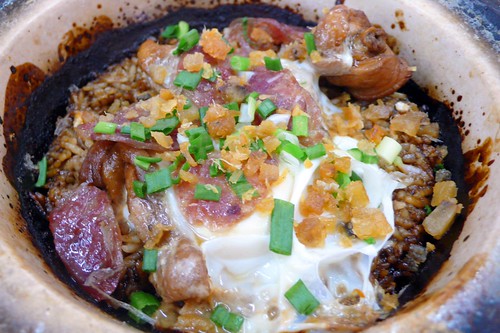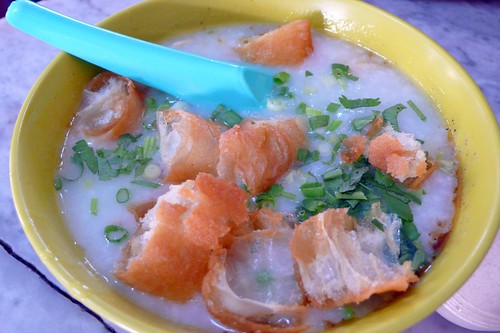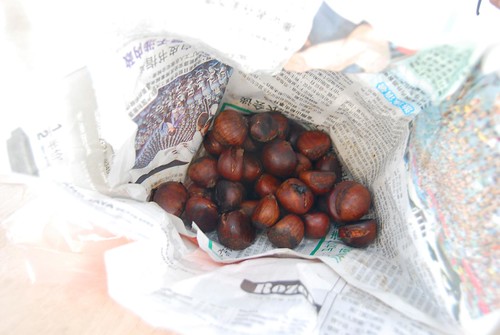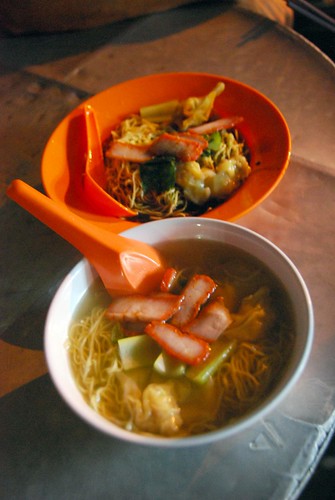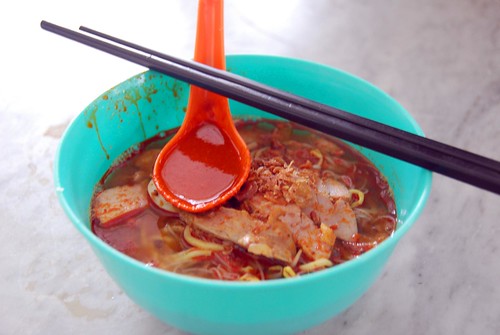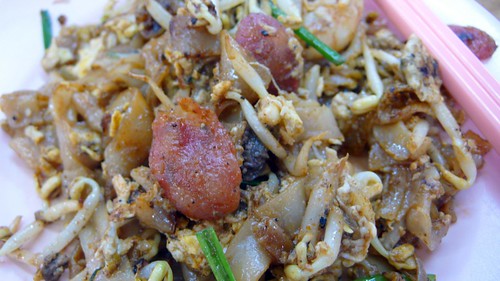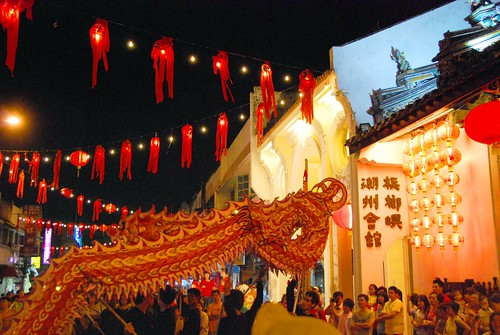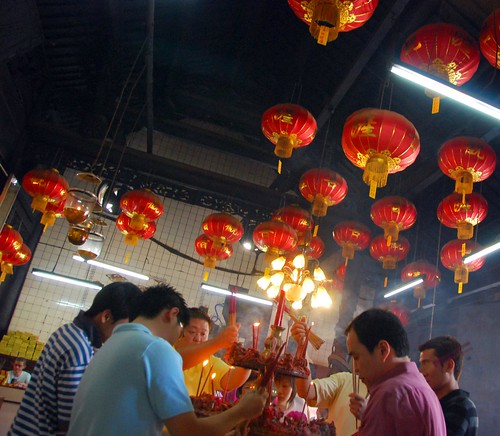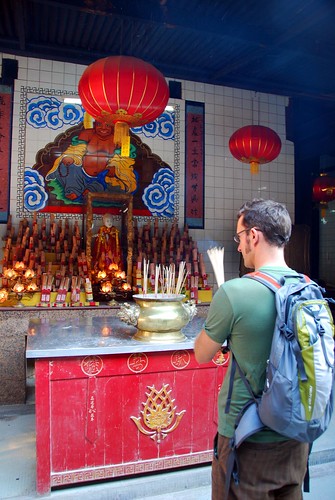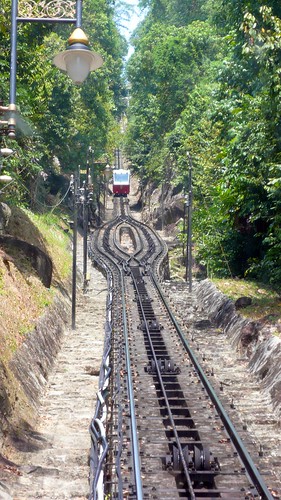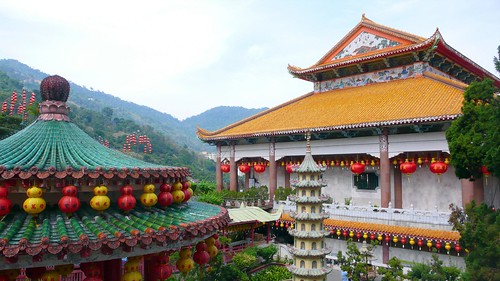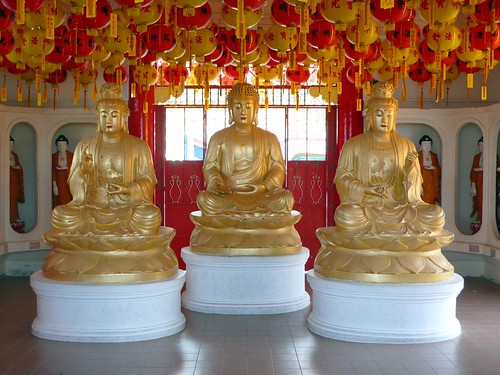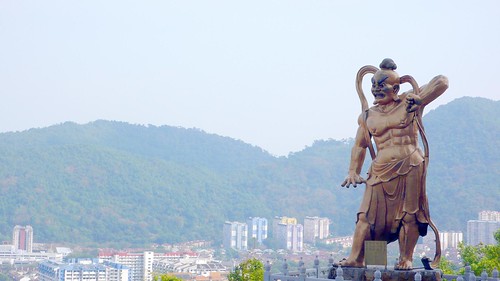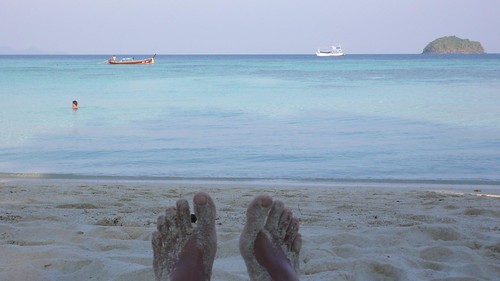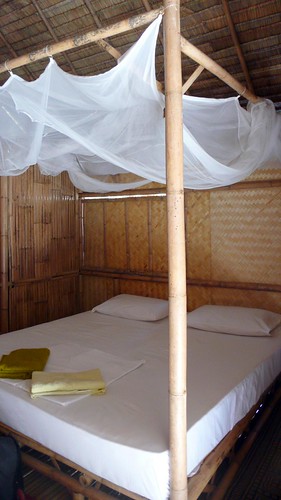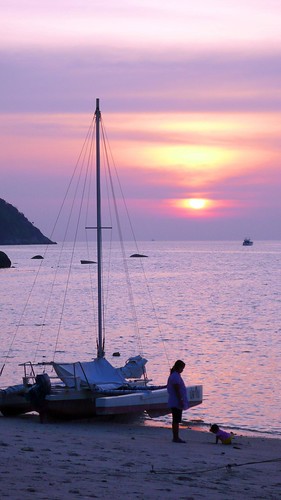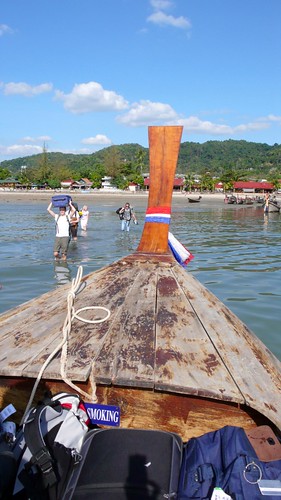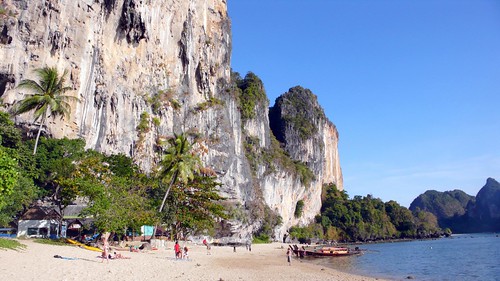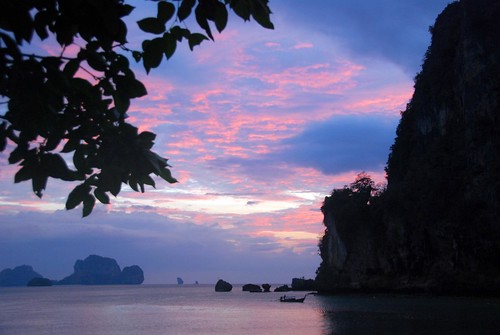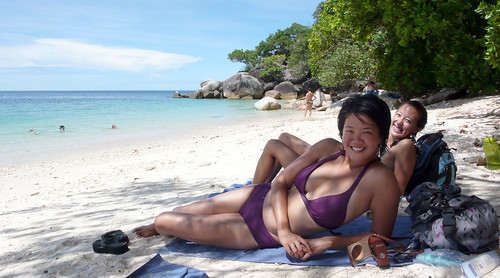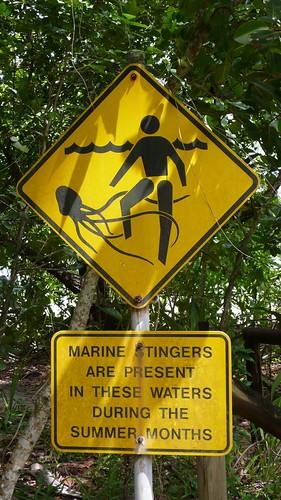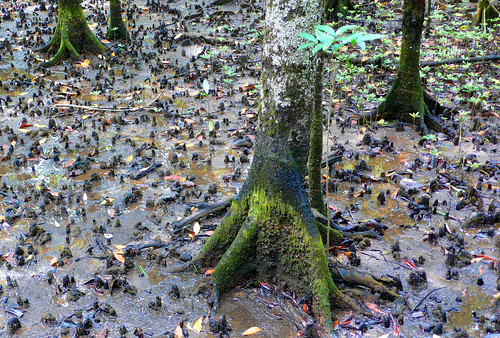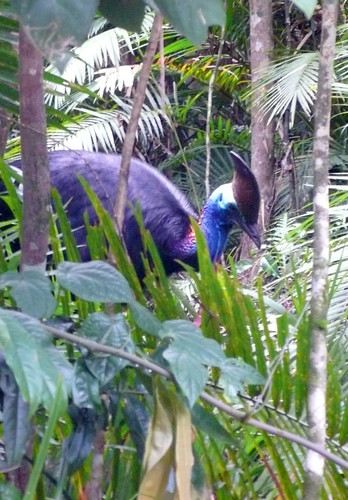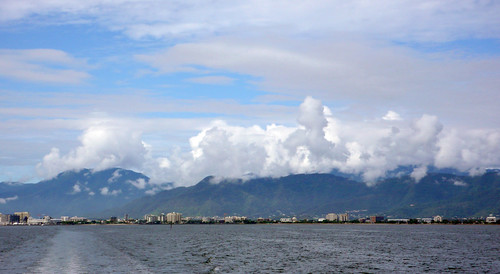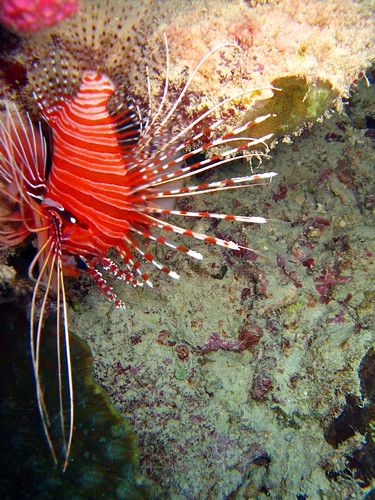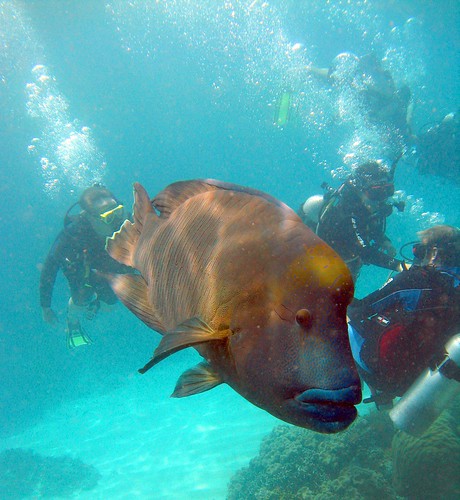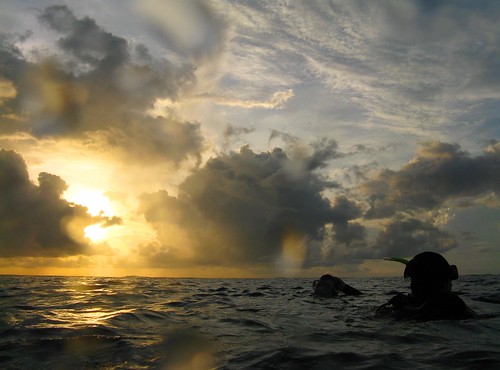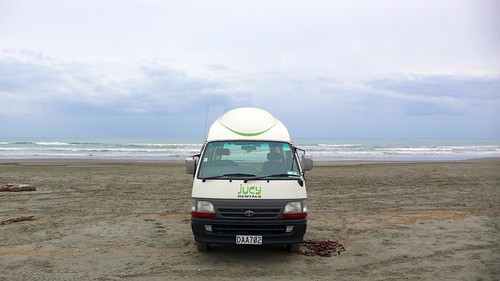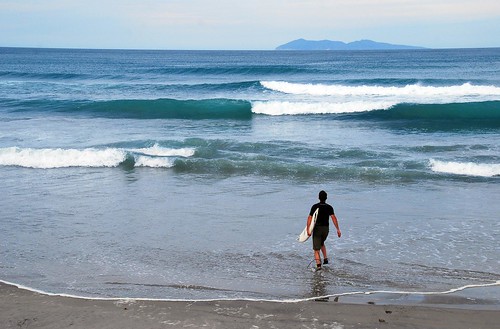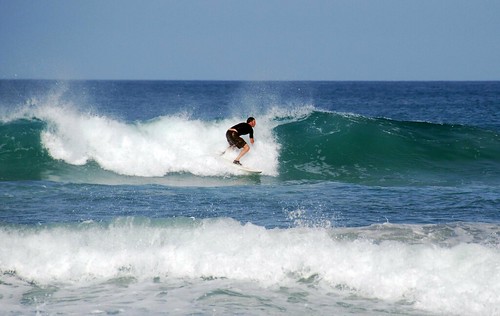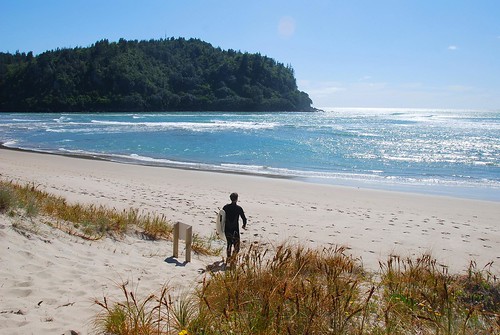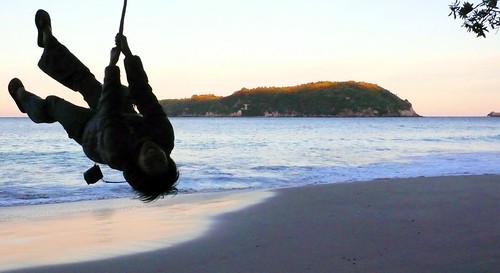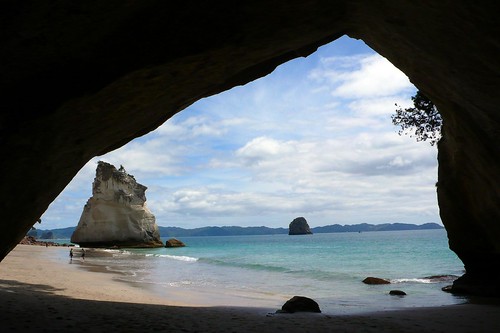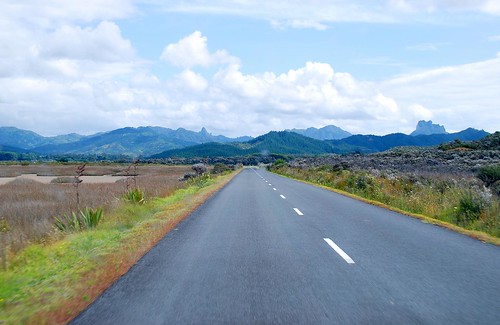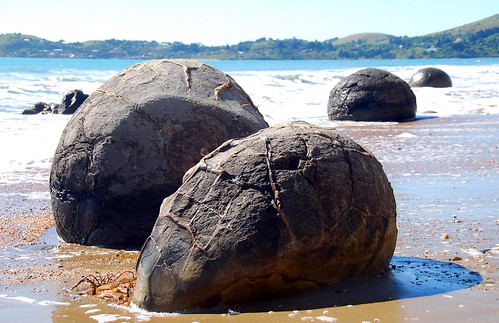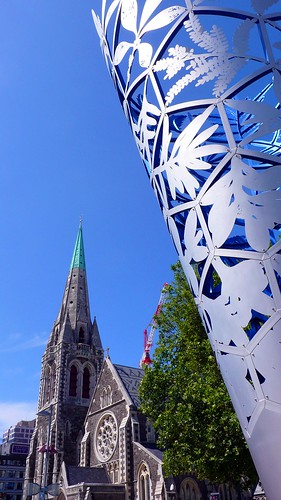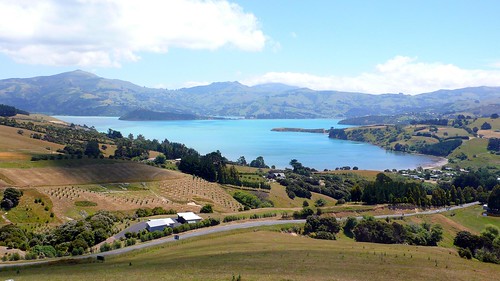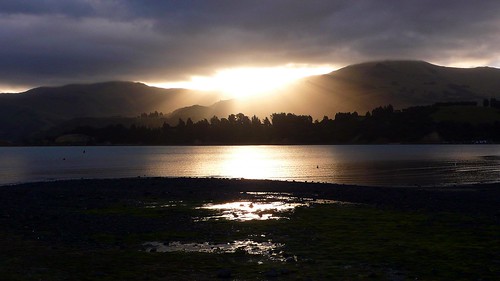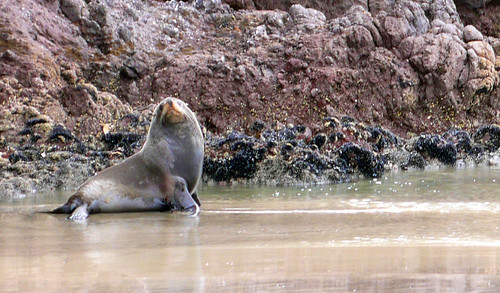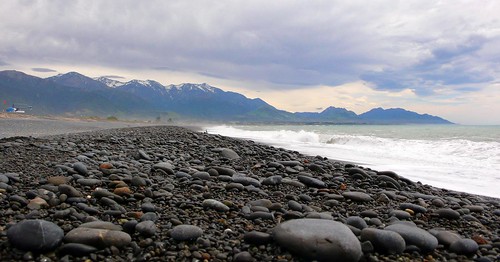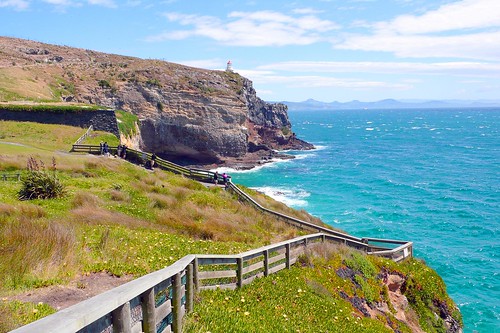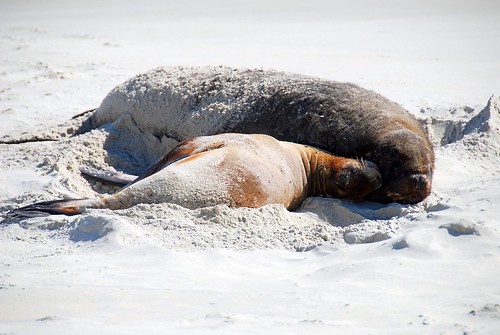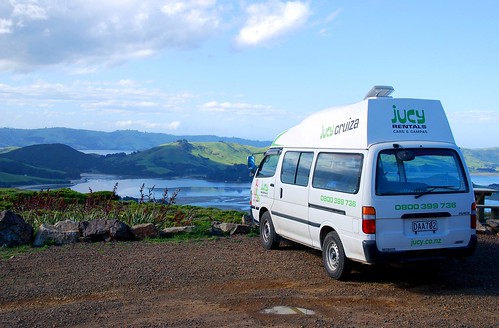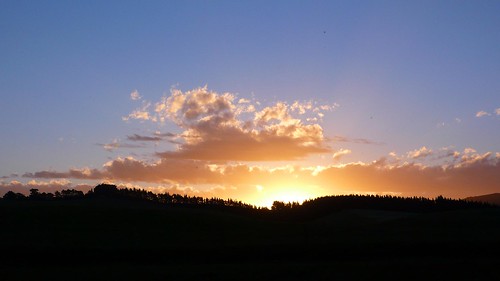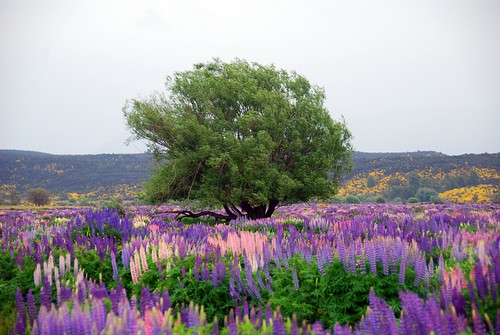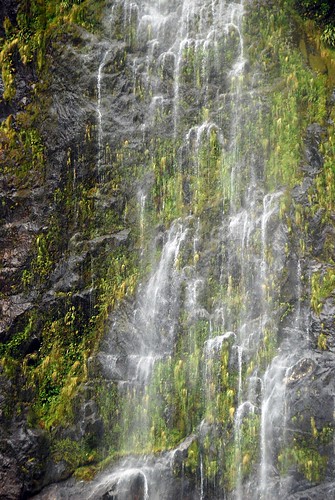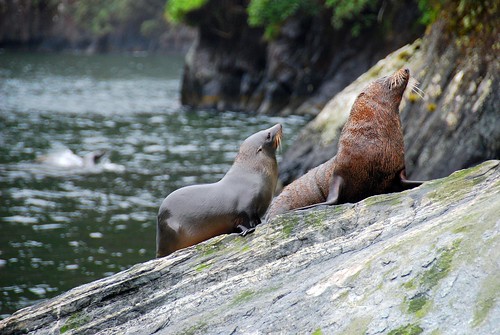Posts Tagged ‘blogsherpa’
As I mentioned in a previous post, we came to Malaysia because we tried Penang and Mussaman curries in Thailand and loved them. Well, we found out much later that these are not Malaysian curries at all, but Southern Thai curries. So, our entire reason for visiting Malaysia was based on a misunderstanding. No matter, because we loved the food in Penang even more than the curries that brought us here.
Penang is known throughout SE Asia for its amazing food. This owes a lot to the clash of cultures that exists here…Indian spices, Chinese noodles, and Thai herbs flow freely into the Malay dishes. Plus, the food is cheap! We had only 1 restaurant meal the 4 days we stayed here, and ate at food stalls the rest of the time, with our dishes costing between 2 and 5 ringgit (aprox. US$0.50 to US$1.50). Even better, the portions here are small, so we could eat about 6 meals a day (splitting the dish each time, so we weren’t really THAT gluttonous). After losing a few pounds in Thailand from our stomach flu, we could afford to overeat a bit anyway. ![]()
Food stand eating is quite convenient in Penang. Not only is it fast and cheap, but there are usually small plastic tables set up nearby so you can actually eat your meal at a table. Basically, it’s just like eating at an open-air restaurant.
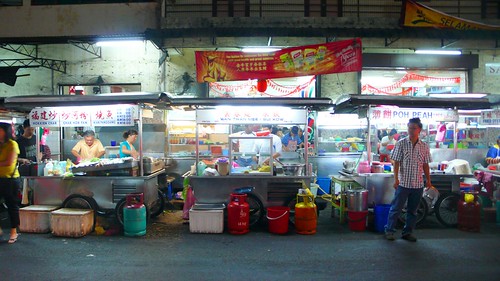
At the New Lane hawker center.
Below is a selection of dishes that we really enjoyed.
Curry Mee (Malaysian)
Curry mee is a noodle soup with a coconut milk base. This was by far our favorite dish in Penang—so nice we ordered it twice! Interestingly, in Penang, noodle soups are often made with both egg and rice noodles—two great tastes that taste great together. Curry mee also includes fried tofu, bamboo shoots, cubes of pig’s blood (thankfully, we did not know what this was until later…we tried it and didn’t mind it), and snails (didn’t know what this was either when we ate curry mee…tried one, didn’t like it). It is served with a spoonful of hot sauce on top; you drop the spoon in and mix the hot sauce with the curry broth. It is really spicy and rich and delicious. My mouth is watering just writing this.
Popiah (Malaysian)
This is a small roll filled with some sort of brown sauce (maybe hoisin?), lots of shredded yam bean, dried bean curd, and some sort of meat (we read that it was crab meat, but we think ours was filled with chicken). All of this is wrapped in a fresh spring roll skin. Because of the yam bean, this roll is super juicy, not dry like most spring rolls. It is absolutely incredible…we were shocked by how tasty and delicious it was, especially since it doesn’t really look like much on the plate. ![]()
Chicken Rice
Again, another winner. This is simply roasted chicken (sometimes they sell it with boiled chicken—be sure to find a stall that sells roasted chicken since it is much, much tastier) with bean sprouts and green onion served with a scoop of rice, a small bowl of chicken broth, and an amazingly delicious chili sauce with ginger. Mix all of these elements together, and you get one of the best meals we had in Penang. Sounds simple, but the flavors are each so distinct that it makes this dish a standout.
Claypot Chicken Rice
This dish is quite different from regular chicken rice. The claypot is placed on top of the range, with a scoop of rice and a dark brown liquid (we think it is a very light soy sauce mixed with other goodies) thrown in. It also includes chinese sausage, stewed chicken, and an egg. This dish sounds like it might be heavy (due to the soy sauce mixture that the rice is cooked in), but it surprisingly light. Also, the crispy rice at the bottom of the pot is a delicious treat.
Nasi Kandar (Indian)
Nasi kandar is a generic term for “Indian stuff with rice.” You can choose any number of curries, fried treats, roasted meats or veggies to go with your rice. They sell it everywhere in Penang and you could probably eat nasi kandar at every meal and never have the same thing twice. We actually had this dish in the ferry building in Langkawi. It is chicken masala, curried rice, and cucumber and pineapple salad.
Congee/Jook (Chinese)
Congee or jook is Chinese rice porridge, and I grew up eating it on the weekends for breakfast. I used to eat it plain with sugar, but in my adulthood I have come to enjoy salty jook. Jeremy loves this stuff too, maybe even more than I do. In Penang, we had it with salted and preserved eggs and chinese fried dough. We will be eating a lot of this when we get to Taiwan. Stay tuned. ![]()
Roasted Chestnuts
There are two roasted chestnut vendors at the Chowrasta market off of Jalan Penang. I remember when I was a kid my dad used to make roasted chestnuts and I always loved them. They are mildly sweet and make a great snack.
Char Siew Noodle Soup and Stir-fried Noodles
We happened upon this food stall one night and had a quick and simple dinner. It’s just a simple noodle soup with barbecued pork and veggies on top. The stir-fried noodles have some soy sauce mixture poured over them. It’s really yummy.
Roti Cenai (Indian)
Unfortunately, I guess I forgot to take a picture of this dish. It is an Indian bread fried in ghee that can come stuffed with goodies like egg and onion. You get a curry dipping sauce with it and it is greasy and delicious.
Sugar Cane Juice
Not a meal, but worth mentioning anyway. You can all kinds of fresh-squeezed juices in Penang (we also really liked the starfruit juice). If you take it “to go,” they dump it in a bag with some ice—no plastic cups here.
Not every meal we had was insanely good. There were a few dishes we tried that we didn’t love. Here are some of those meals:
Hokkien Mee
Hokkien mee is a spicy noodle soup with prawns and Chinese cabbage. We didn’t love this dish because it is very fishy tasting, even for us (we love fish). We think the broth is made with dried shrimp, which gives it a very strong, almost smoky flavor.
Char Kway Teow
This is basically a stir-fried noodle dish with flat rice noodles, chinese sausage, bean sprout, and egg. It was fine, but not one of the standouts. Maybe if I tried one of the other char kway teow vendors?
Assam Laksa
Sorry, again, no photo. We may have ordered this from the wrong place…we got it from a Muslim hawker stand because they were the only ones not harassing us to eat at their joint. Laksa is not a Muslim dish, however (it’s Malaysian), so it may be better at another food stand. Also, it’s worth noting that laksa in Penang is different than laksa elsewhere in Malaysia—the broth is much fishier and there is less coconut milk used.
We want to give a special shout-out to the people running the food stands. These people are amazing! They are super fast, they work long hours, and they often speak several different languages. We should have gotten video of some of these people working…their hands move so fast, they look like martial artists! Hi-ya!
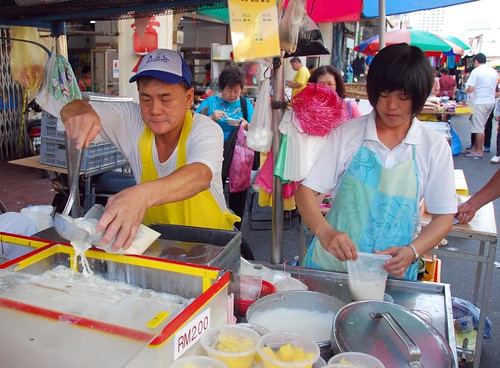
Soy milk vendor at Chowrasta market.
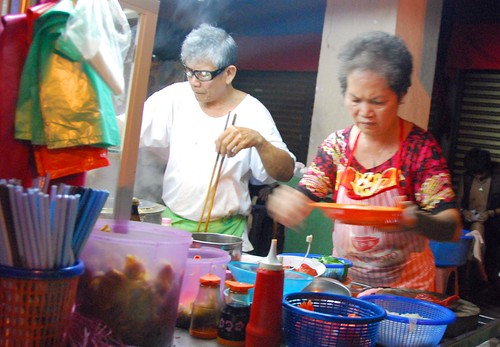
Char siew noodle soup stall on Lebuh Chulia.
As you can probably tell, we loved Penang. The food is great, we love the mix of different cultures all living together peacefully, and best of all, there are not that many tourists here as compared to other parts of SE Asia. We had a nice time climbing and swimming in southern Thailand, but we were troubled by how much it seemed like a playground for Europeans and Americans. We were longing for a little more interaction with the locals and we got that in Penang. Malaysia rocks!
While we were in Ton Sai, we had a couple of really delicious dishes (Penang and Mussaman curries) that we learned were of Malaysian origin. Southern Thailand borders Peninsular Malaysia, so there is a lot of Malay food in Thailand and vice versa. Since Ko Lipe is so close to Malaysia already, we decided to head over…our first stop would be Pulau Langkawi (a resort island) en route to Penang, which is famous throughout SE Asia for its food. From there we would head to Kuala Lumpur. Jeremy really wanted to check out KL because he likes the name. Also, it is a major airline hub, allowing us to fly back to mainland SE Asia for cheap. So there you have it: we went to Malaysia for (1) the food, and (2) because its capital city sounds like “Lumpy Koala.” We are very picky and discerning travelers over here at 12FOOT3.
All over Pattaya beach, there are signs advertising a “45 minute speedboat” to Pulau Langkawi, an island on the very northern tip of Peninsular Malaysia. We paid about 1200 baht (approx. US$35) each for the ride over, and we were looking forward to the quick and easy hop over to Malaysia.

Bye bye Ko Lipe: Pattaya beach as the Langkawi boat speeds away.
OK, not so fast: first of all, the trip actually took more like an hour and a half (and the boat left late). We have found that in SE Asia, time estimates can be quite off…what is advertised as a 5-hour bus ride really takes only three; a 45-minute boat ride means you get there an hour and a half later. This wouldn’t be so bad except that this speedboat ride was The. Bumpiest. Boat. Ride. EVER. There were about 10 of us on the boat and we all sat around looking at each other nervously as the boat crashed repeatedly against the waves. At times, it really seemed like the boat could break apart from the turbulence. And, they probably should have warned us, like they do at Sea World, that if you sit in the first 6 rows, you may get very wet. Well, we all had front-row seats and were completely drenched several times throughout the trip. I consider it a minor miracle that no one got sick on the ride.
We finally got on land in Langkawi (where they actually have a pier! No wading through the surf to get to shore here) and happily jumped ashore…and waited. And waited. It took about 2 hours for them to process our visas…so, our 45-minute speedboat ride had turned into a 4 hour trip. So much for the quick and easy hop over to Malaysia. ![]()
We don’t really have much to say about Langkawi because we only stayed there for one night. The Malaysian government has put a lot of resources into advertising Langkawi, and it worked…there seem to be a lot of Asian and European tourists on this island. Accommodation and food can be expensive here (compared to other parts of Malaysia)…we paid about 70 Malaysian ringgit for our room (approx US$20) and probably about 40 ringgit (US$11 or so) for food. In fact, the only thing that is not expensive is the beer. It is the one area in Malaysia where alcohol is duty-free, so a beer can cost as little as 3.50 ringgit (US$1).
We spent the afternoon on the beach. Malaysia is a very Muslim country, and it was interesting watching teenagers jump in the water in full clothing and head scarves.
The water here is murkier than it is on the Ko Lipe side, and the beach more crowded with people and vendors trying to sell tourists silly “adventure” experiences like parasailing or riding on something called a “big banana” (a giant inflatable tube that you ride like a horse) being pulled by a speedboat. We preferred Ko Lipe to Langkawi. ![]()
The next day, we took a ferry from Langkawi to Penang. This boat was thankfully much calmer than the speedboat we took from Ko Lipe. And they showed the Lindsay Lohan version of “Herbie the Love Bug,” which Jeremy was totally entranced by. There were also really helpful signs instructing us on how to put on a life vest in case of emergency.
The food of Penang deserves its own post (coming up next), but we did do stuff besides eat in Penang (though not much more). We found a great old colonial guesthouse on Love Lane in Penang called Old Penang Guest House. At 50 ringgit (US$14), it was on the more expensive side, but we loved it so much and the people running the place were so nice that we didn’t mind the extra cost. Plus they had free wi-fi, our room had A/C, and there was electricity around the clock. Luxury!
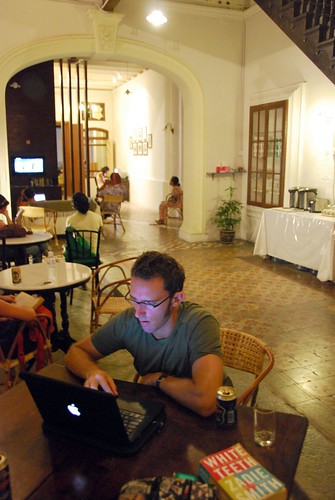
The common area at Old Penang Guest House.
We just happened to come into town at the end of the Chinese New Year celebration…there are lots of Chinese in Malaysia and the festival here is huge, lasting 7 days. The streets were filled with people watching lion dance performances and generally celebrating the new year.
The really wonderful thing about Penang is the clash of cultures that exists here—Chinese, Indian, Malay; Hindu, Buddhist, Muslim, and Christian—it’s all here and everyone seems to get along. It’s quite amazing. There is a city walk that you can do called the Street of Harmony walk because it takes you from a Catholic Church to a Chinese and then Hindu temple, on to a Muslim mosque—all in about 3 city blocks. We wandered into Han Jiang Temple one day, where Chinese people were paying their respects to their ancestors at the start of the new year. We decided to take part, so I asked the lady selling incense how to do it, and she taught me (Mandarin comes in really handy in Malaysia) how to burn the incense and paper money at each of the temple urns.
We also took a day trip up Penang Hill one day, where you can ride a trolley up to see views of the city below.
From Penang Hill, you can walk to Kek Lok Si Temple, and absolutely enormous, colorful, and elaborately detailed (some might even say gaudy) Chinese Buddhist temple.
Despite the grandeur of Penang’s temples and its old colonial charm, the real star of the show here is the food. Stay tuned… ![]()
As I mentioned in the previous post, we really didn’t have a plan in place for SE Asia…which in many ways is really good for us (or at least, me)—to learn how to be comfortable with the uncertainty of not knowing where we are going to sleep or even what city we are going to be in the next day. BUT, this also means we spend a ridiculous amount of time trying to figure out what the heck we’re going to do next. We had originally planned to go diving in Ko Phi Phi, but we found out from some people on Ton Sai that (1) Ko Phi Phi is a big, noisy scene full of kids getting drunk and foreign men and their “Thai wives,” and (2) that the diving is better in Sipadan (in Malaysian Borneo)—actually, rumor is that it is the best diving in the world. So, we decided to check out another island in Southern Thailand (island hopping is a big thing here), and save our diving dollars for Sipadan.
Oh, but what island to go to?!? I know, I’m not expecting anyone to throw us a pity party for this quandary…but we really spent a lot of time changing our plans back and forth. For a while, we were heading to Loh Liang, a tiny island with one resort where a lot of climbers go from Krabi. Then we thought maybe we should dive in the Similan Islands. Finally, we decided (after hearing rave reviews from several people we met on Ton Sai) to head to Ko Lipe, a small island at the very southwestern tip of Thailand in Ko Tarutao National Park. And we were sooo glad we came.
We took a long tail boat from Ton Sai to Ao Nang, a bus from Ao Nang to Pakbara, and a speed boat from Pakbara to Ko Lipe. There are three main beaches in Ko Lipe: Sunrise beach, Sunset beach, and Pattaya, with the last beach being the busiest. One of the gals in Ton Sai said we should stay at Coco Resort on Sunrise beach, and it didn’t take us long to realize that we basically had the best spot on the island.
The strip of Sunrise beach right in front of Coco Resort was quiet, pristine (look at that water!!!), and peaceful; even a few meters down the beach was more crowded and noisy. Plus, Coco Resort was a lovely little place run by a Thai family…we negotiated a bamboo bungalow for 900 baht per night (approx. US$26) the first night, and it seems like this might be one of the cheaper places on the island to stay. The bamboo room was very atmospheric but the floor felt like you could fall right through it. Later we would see that half the posts supposedly supporting the bungalow were several inches too short and didn’t reach the ground (scary!!!).
So the following day we moved to a concrete bungalow (700 baht/US$20 per night), which felt a little more solid. ![]()
We spent three days here swimming, reading on the beach, and generally enjoying the beauty that is Ko Lipe. And, on one particularly inspired day, we watched the sunrise on Sunrise Beach:
And the sunset on Sunset Beach:
We had some great dinners here too…there is a place at the very end of Pattaya beach where you can walk up and choose your fish from a huge platter of iced seafood treats. They weigh it, grill it, and serve it to you at your table on the beach. YUM!
We LOVED Ko Lipe!
We really didn’t have a plan as to where we were going after we arrived in Bangkok…and, as we’ve discovered, even if you *think* you have a plan, SE Asia has other ideas for you. ![]() Jeremy remembered that a friend of ours from SF, Jeremy Sugerman (I will refer to him as “Sug” to avoid confusion), is often in Thailand for 6 weeks around January/February, so we emailed him…and sure enough, he was in Krabi, a small beach town in Southern Thailand near Phuket which is known as “Climber’s Paradise” due to the fact that it is surrounded on all sides by enormous limestone cliffs. We’ve heard about Krabi for years because many San Francisco climbers often visit. That, combined with the fact that Sug was there, was all the reason we needed to head down south.
Jeremy remembered that a friend of ours from SF, Jeremy Sugerman (I will refer to him as “Sug” to avoid confusion), is often in Thailand for 6 weeks around January/February, so we emailed him…and sure enough, he was in Krabi, a small beach town in Southern Thailand near Phuket which is known as “Climber’s Paradise” due to the fact that it is surrounded on all sides by enormous limestone cliffs. We’ve heard about Krabi for years because many San Francisco climbers often visit. That, combined with the fact that Sug was there, was all the reason we needed to head down south.
We booked a flight to Krabi in Bangkok. In SE Asia, you can book airline tickets the day before you want to leave, and they’re still pretty cheap. Also, the price a travel agent can offer can be cheaper than one you can find on the internet. We spent about 2500 baht (approx. US$75) per person for a one-way flight from Bangkok to Krabi. This isn’t a rock-bottom price, but given the fact that the bus ride to Krabi is 10 hours long, we decided to spend the dough.
Sug was staying on Hat Ton Sai in Krabi, a tiny beach area accessible only by boat. So, after we got off the plane in Krabi, we took a bus to Ao Nang, where we boarded a longtail boat to Ton Sai. That’s a lot of different transportation for one afternoon! It was low tide where we got to Ao Nang, which meant we had to walk through the water to board the boat since they can’t get to shore (and there is no pier). Thank goodness we have hybrid wheelie/backpack bags! We had agonized over this decision before we left on our trip—Jeremy just wanted a wheelie duffel bag and I insisted that he find a bag with backpack straps. In true Hermann fashion, Jeremy found the bag that worked for him, and then rigged up a backpack using detachable straps. Hey, whatever works. ![]() I felt really bad for the people who didn’t have backpacks. None of us expected that we would have to haul our bags across the beach and then through the water, but it was extra tough for the non-backpackers and some of their bags got quite wet.
I felt really bad for the people who didn’t have backpacks. None of us expected that we would have to haul our bags across the beach and then through the water, but it was extra tough for the non-backpackers and some of their bags got quite wet.
The boat ride into Krabi is really beautiful. Krabi is a stunning place—it is quite dramatic with all the rocky cliffs—and the landscape is very different from other parts of Thailand.

View of Rai Leh beach from Thai Wand, Ton Sai is the next beach over (to the left).
Sug had hooked up a room for us at Dream Valley Resort, where he was staying. Our bungalow was cute from the outside, but quite basic inside, and at 650 baht (approx. US$18.50) per night (including breakfast), it was one of the cheapest places to sleep. This means Ton Sai is not the most economical accommodation in Thailand, but it is certainly a lot cheaper than the next beach down, Hat Rai Leh, where rooms can go for at least 2000 baht per night. Ton Sai is run on generators, so you only have electricity in your room from approx. 6:30PM until 8AM. At least you can run the fan at night! A few more details: the toilets do not flush (you have to dump a bucket of water down the loo), the showers are cold, and the beds are HARD! Even for Jeremy and I (we love a firm bed), these beds were like concrete slabs. So, very basic indeed!
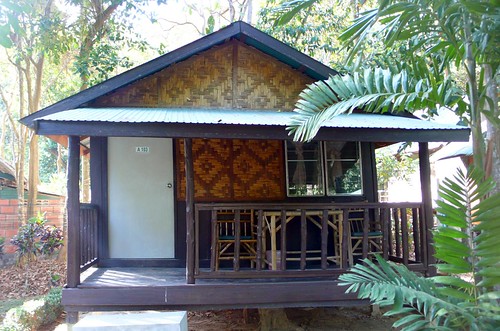
Our bungalow at Dream Valley Resort.
But most people are not in Ton Sai for the accommodation: they are there to climb. Literally, every rock wall you see has been bolted and there are people climbing it. It really is a sport climber’s paradise. Given that Jeremy and I have not been on a wall for over a year (and probably at least 5 years since we’ve been on real rock), we didn’t pack any gear with us on our trip. But it’s easy enough to rent shoes and a harness here on Ton Sai.
Our first day out, we went with Sug, Janet (a great gal—Sug’s friend visiting from SF), and Sug’s friends Chris and Kindy (who have a gorgeous house in Rai Leh) to Thai Wand wall, and then to another location (I forget the name). NOTE: We took to calling Sug the “Mayor of Ton Sai,” because he knows EVERYONE! He has come to Krabi for the last 9 years (and he stays 4-6 weeks each time), so he truly is the mayor.
And, the awful truth: I was pumped out after two climbs. Jeremy managed to finish 4 climbs that day.
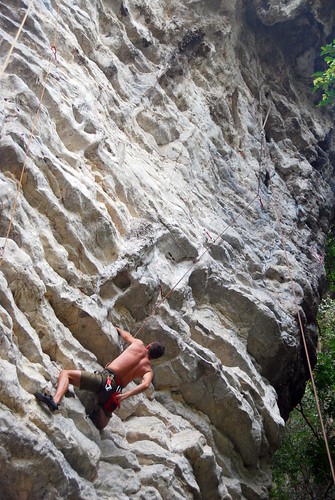
Jeremy on…some difficult route.
We ended the climbing day with beers at Sawasdee bar at sunset.
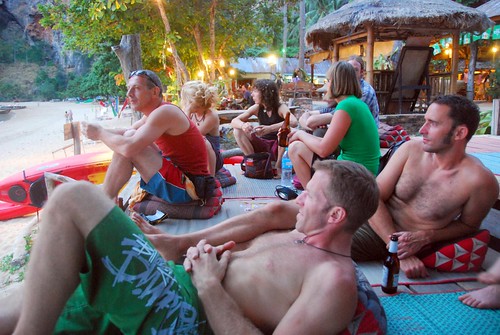
The Jeremies watcing the sunset from Sawasdee.
In fact, this is part of the general “schedule” of events every day on Ton Sai: get up early, eat breakfast, climb, lunch at the chicken ladies (some women who have food stalls by the beach selling yummy grilled chicken), climb more, beers at Sawasdee bar at sunset, followed by dinner at Banyan Tree.
Jeremy and I couldn’t take part in this daily routine the following day because we were SORE. Oh my, a year off the rock and we were little weaklings. So, we decided to go out sea kayaking. Hey, guess what? It turns out that the same muscles you use to climb are the ones you use kayaking. So, it wasn’t much of a rest day for us. ![]()
Jeremy and I planned on staying in Ton Sai only about 3 days or so, but then, as I said earlier, SE Asia had other plans for us. Jeremy came down with a case of “Ton Sai belly,” a stomach virus that kept him bedridden for about 24 hours. So far, I had escaped the virus (Sug had it the day before), so I went out climbing at Eagle wall with Janet and a cool German girl named Hannah.

Taken from the summit at Eagle wall.
Again, my limit was two routes, but this time it wasn’t my muscles but my belly: I felt the rumblings and the cramps…I had came down with the virus too. ![]() Let me tell you, it’s no fun being stuck in a bungalow with no air conditioning (much less electricity) when you’re sick. And, the bed felt even harder than hard with all our achy muscles against it.
Let me tell you, it’s no fun being stuck in a bungalow with no air conditioning (much less electricity) when you’re sick. And, the bed felt even harder than hard with all our achy muscles against it.
But honestly, it wasn’t so bad for our first time being sick. It only lasted a day and the cramps definitely weren’t as bad as the times I had food poisoning. Besides, we need to toughen up our stomachs if we are going to make it through Asia.
So, we ended up staying in Ton Sai a little longer than we wanted to, and I have to be honest here: even though the climbing is great, I still can’t understand why all the climbers think it is heaven on earth in Ton Sai. Many people literally stay for months and they can’t even fathom why you would want to leave. I mean, it’s nice, but the beach is a bit polluted and during low tide the shore is muddy and littered with dead coral. Plus, Jeremy thinks water table is contaminated (the water coming out of the sink is quite stinky), which basically means there is no way you can stay healthy on Ton Sai, because everything is washed in this water. Honestly, it kind of grossed us out a bit. Maybe I am being too prissy, but I just thought, “Thailand HAS to get better than this.”
But I don’t want to end on to sour a note. We had a great time climbing again and it was fun hanging out with Sug and meeting Janet. We met a lot of cool people who helped us figure out where to go in SE Asia and how to get there. But in the end we were glad we were only spending a few days in Ton Sai. ![]()
When we got off the OceanQuest II, we were very tired and more than a bit messed up from all the diving we did (clogged ears and blistered feet from the bad rental fins), but happy and looking forward to our the next part of our Cairns trip: a visit from my cousin Jasmine! Jasmine is in grad school in Brisbane, so she bought a plane ticket into Cairns to share a few days with us on our trip. We’ve met a lot of really nice people, but there’s nothing like seeing a familiar face while you’re traveling…and family at that! ![]()
Diving is by far the biggest tourist attraction in Cairns, but you can also hop around to some of the offshore islands via ferry. We chose Fitzroy Island, because we read that Green Island was more touristed and Fitzroy attracted more locals. The ferry to Fitzroy costs about AUD$63 return (approx. US$48), and it takes about an hour to get to the island. There are a few small beaches and one resort there, where you can rent snorkeling gear and stinger suits: ridiculous-looking full-body swimsuits that prevent you from being stung by the deadly jellyfish in the water.
After putting on the suits, your fins, and snorkel mask, the only skin exposed is on your forehead and around your mouth…and you still get stung around your lips (though only by harmless but stingy jellyfish and not the super deadly kind). We were both a little freaked out by this but once the current came up in the afternoon, it washed all the stingers away and you could get in the water without the Blue Man suit on.
It was a really lovely island and we spent the day relaxing on the beach, snorkeling, and checking out the new resort they just built on the island.
The following day, we rented a car and drove up towards Cape Tribulation, which the brochures describe as a place where “the rainforest meets the reef.” One thing I haven’t mentioned about Cairns: it’s hot. And wet. Like, 90 degrees hot and 100% humidity wet. Also, remember the deadly jellyfish? If not, there are helpful signs everywhere to remind you:
All you want to do is jump in the water when it’s this hot and wet, but you can’t because of the deadly jellyfish, and oh yeah, did I mention there are crocodiles here too?
All of this makes Cape Tribulation a bit boring, since you can’t really swim or walk on the beach and there isn’t really much else out there. BUT, we did do a “boardwalk” (literally, a boarded walkway) through a mangrove forest. And this was actually really cool because it turns out that Jasmine is some sort of mangrove expert and could totally be a mangrove tour guide if there was such a thing and she decided that life as a grad student wasn’t for her. She told us all these cool facts about mangroves, like the fact that the long pods that hang off the tree are actually mangrove seedlings that have already germinated, so they just fall off the tree, float in the water until they hit land, and immediately take root.

Seedlings hanging off a mangrove tree.
Mangroves also send up root stubs above the ground in order to get more air, like little snorkels:
We also spotted a cassowary! In case you don’t know what a cassowary is (I didn’t), it’s an enormous bird like looks kind of like a ostrich or emu, except its body is covered in black fur, and its head looks like a psychedelic turkey. They are weird, but super cool looking animals.
Mostly though, we just spent the time seeing some stuff around Cairns and getting to know Jasmine a bit better. Jasmine and I grew up together in San Diego and our families are really tight, but we really haven’t spent much time together as adults, and it was really cool to see the interesting human she has become. Thanks for coming to visit us, Jasmo! We had a great time with you and really appreciate you spending the time and money to come see us on our trip. xox
Cairns is on the northeastern side of Australia, in Queensland (apparently the only state where people actually say “crikey,” though we never heard any Aussies use this phrase). Cairns the city isn’t much to write home about, but it acts as a launching pad for the Great Barrier Reef. The GBR is unusual, first, for its size (huge), and secondly, for the fact that it exists so far away from the coast (usually, reef systems develop fairly close to the shore). As a result, to get the best diving experience in the GBR, you must stay on a liveaboard boat. You can do a day boat out to the reef, but you will spend most of your time in transit (it takes an hour on a motorboat just to get out to the reef) instead of doing what you really want to do, which is diving.
We did a 3 day/2 night excursion with Deep Sea Divers Den, one of the larger GBR touring operations (the other is ProDive). It is a large boat, with room for 48 people, but the boat was not at capacity since this is the low season in Cairns due to tropical storming (Aussies call it “the wet,” and indeed, it apparently stormed really hard the day before we flew into Cairns, as the surrounding plains were completely flooded). We had tried for a smaller boat—the Santa Maria is smaller sailing vessels that maxes out at 10 people per trip—but their leave dates did not work with our schedule. Nevertheless, DSDD is a great deal: a really nice double room, all food, and all gear for 12 dives costs AUD$560 (approx. US$420) per person. They do try to upsell you on a few things (guided and deep dives, a nicer flashlight for the night dives, etc.), which is annoying but I guess to be expected. The common areas on the boat are also really large and comfortable, so we never felt crowded or claustrophobic.
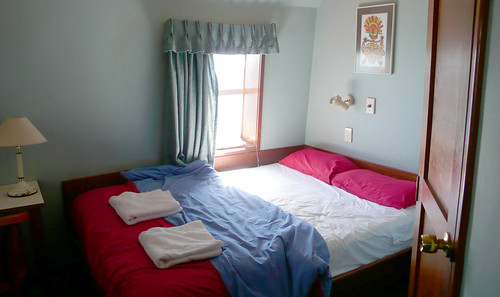
Our double room on the OceanQuest II.
So here’s how it works with DSDD: you board a day boat early on the first day (DSDD will pick you up from wherever you are staying, which is nice). This first boat is where you will do your first 3 dives. After lunch, people who are staying overnight get transferred over to the liveaboard (the OceanQuest II). The day boat includes certified divers, people taking their PADI courses, and snorkelers, and it is pure mayhem. The dive deck is small and crowded, and it is pretty chaotic and hectic when all these different groups are trying to get ready to get in the water. But that’s not the worst part—apparently half the people on this boat did not realize that they were prone to seasickness…until they got on the day boat. I’m not joking when I say that there were people throwing up everywhere you looked. As such, we started referring to the day boat as the “Barf Boat.”
Needless to say, we were pretty happy to be transferred over to the OceanQuest II, where things are much calmer, more spacious, and less..barfy.
OK, on to the diving. When we tell people that we dove the GBR, the first thing they ask is, “Is the reef really dying?” And the answer is, well, yes, parts of it are. But other parts of it are still really beautiful and pristine. On the OceanQuest II, we moved dive locations twice a day, but all locations seemed to be clustered around the same area. We are not sure if maybe Queensland makes the large boats stick to a certain part of the reef in order to minimize damage, or maybe divers are only allowed in certain areas. In any case, it seems that you move very short distances from one cove to the next when you dive with these liveaboard operations.
I don’t think we had the best dive conditions when we were there. The first day was pretty bad because the storm had stirred up a lot of stuff and visibility was pretty poor. But by the second day the visibility was a lot better—probably up to about 10 meters—though we heard that when it is good here, you can see 30 or more meters under water. The early morning dives were the absolute best conditions: the sun is just rising, the reef is waking up, and the visibility is excellent.
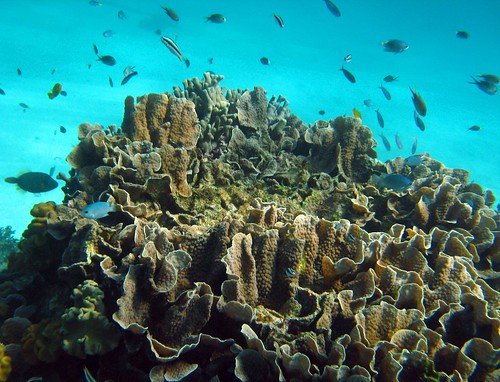
Coral system with lots of fishies.
We did 4 dives the first day, 5 dives the second, and 3 dives on the final day. That’s a lot of diving! I think I had only done about 10 or so dives before this and Jeremy had done 6, so with 12 more dives under our belts, we doubled and tripled our logged dives. It was a pretty intense schedule. On the second day we did the following:
6AM: Morning dive
7AM: Breakfast
9AM: Dive
11AM: Dive
12:30PM: Lunch
3PM: Dive
6PM: Dinner
7PM: Night dive
Oh, one thing to take note: all dives on this boat were unguided (you have to pay AUD$15 or US$12 for guided dives with DSDD). This was really unusual for us, as we have always been diving with a divemaster, but we came to really like the freedom of unguided diving. DSDD does a little dive brief beforehand to go over the dive area, and then you get thrown into the water.
We saw fabulous coral systems, a shark (Jeremy did, I didn’t), a guitar fish, giant clams, rays, turtles, and lots and lots of tropical fish. By far the star of the underwater show, however, was Wally, a giant Napoleon fish who is so tame we were calling him “the puppy dog of the sea.” Seriously, he would swim right up to you and let you pet him and everything.
The phrase “diving the Great Barrier Reef” elicits all sorts of fantastic thoughts in the imagination, and though we’re not sure that our experience met these very high expectations, we are really glad we did the trip. We mets many really fabulous people, did our first night dives, logged several more dives in our books, and overall had a really great experience…except for the barf boat. ![]()
This will be the last post about what we did in New Zealand…makes me kind of sad all over again to say goodbye to our Kiwi adventure!
Our final stop in New Zealand was the Coromandel Peninsula, which is about 1 hour east of Auckland. But before that, we boarded the ferry in Picton and once we got dropped off in Wellington, we drove up the west coast a ways looking for a freedom camp spot for the night. We found it in a place called Hokio Beach, where you are allowed to drive straight onto the shore…there are speed limits and everything.
It turned out to be quite a scene as the night wore on…lots of teenagers doing donuts on the beach and people driving super fast just because they can. I guess Kiwis are just as excited about driving on the beach as we were!
The following day we drove to Lake Taupo, which is right in the middle of the north island. It was raining pretty hard when we got there so we needed a bad-weather activity for the day. Luckily this entire region is known for its hot springs. We ended up in a town called Tokaanu, though we just hung out in a hot pool and not in the mineral waters because we got a little freaked out by all the signs warning us not to put our faces in the water due to amoebic meningitis. I can attest that on a rainy day, the hot pool felt just as nice.
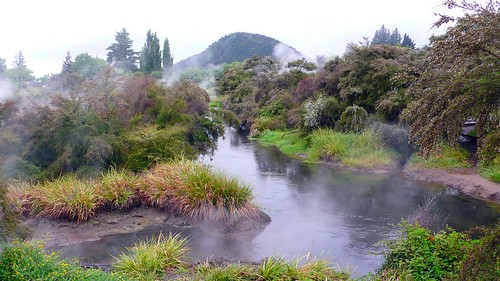
Steam coming off the pools in Tokaanu.
Lake Taupo is very pretty, but also very touristed. Everything was really expensive here. We read about a cool place called Orakei Korako, which is a geothermal mineral formation with spectacular colors. However, when we got there, the entrance fee to the park was NZ$31 per person. This was more expensive than our Milford Sound cruise! So instead of hanging around Lake Taupo, we opted to head straight for Coromandel and spend a more relaxed few days exploring that area.
We hadn’t quite gotten to the peninsula yet when we stopped at deserted Waihi beach to discover…a swell! Finally! Jeremy was so excited he ran straight for the water.
And immediately caught several waves…
…and then came back, exhausted after 20 minutes. ![]() He said, “all those flat days, I should have been out there paddling, getting in shape!” A surfer’s hindsight is always 20/20.
He said, “all those flat days, I should have been out there paddling, getting in shape!” A surfer’s hindsight is always 20/20.
Actually, it was a good thing he didn’t stay out there too long, because we drove further north that day, and the waves were even better…so out Jeremy went again.

Jeremy heading out for the second surf of the day.
And the following morning, another session off a point break at Whangamata.
After J got his fill of surf, we headed for Hahei Beach (not sure how this is really pronounced, but a nice German couple we met in Lake Taupo was calling this “Hey! Hey!” so that’s how we pronounced it). Hahei is an incredible beach…we took a walk at sunset and found a tree swing, and then spent about 20 minutes trying to take silly pictures on it.
Hahei is close to two major sights: Cathedral Cove (it’s easy to see why they gave it this name)…
…and Hot Water Beach, where you can dig yourself a natural hot spring on the beach +/- 2 hours on either side of low tide. There were a lot of people doing this and we tested the waters…it really was hot!
We headed straight from Coromandel Peninsula to the airport…we wanted to squeeze the most we could out of this incredible landscape before we hopped on a plane for Sydney.
And that concludes our tour of New Zealand. What a magical country! Stay tuned for our NZ wrap-up…
After our stint in Dunedin (Ma, I’m done eatin’!), we were pretty tired…after all, we had been on the go pretty aggressively for 3 weeks in order to fully experience all that New Zealand has to offer. So, for the next several days, we took it easy as we drove up the east coast of the south island…instead of doing a big hike in the morning and driving 4 hours in the afternoon, we chilled, checked out some sights, found some wireless hotspots, and were generally less motivated about the entire thing. But we did do and see some things I want to mention (and quite frankly, I want to remember, so I’m recording them here!).
Our next major stop after Dunedin was Christchurch. On the way there, we stopped at a place called Moreki Boulders. They are basically some large geodes on the beach. Not that exciting, but they are almost perfectly circular and people seem to have a strange fascination with them.
Christchurch town has a similar feel as Dunedin: lots of Victorian buildings…
…with a peninsula to the south of the town center. The difference is that the Banks Peninsula to the south of Christchurch is much bigger…HUGE, in fact.
We camped in a cute little town called Duvauchelle. Jeremy and I seem to prefer the holiday parks that are off the beaten path…their amenities may not be as nice, but they are generally cheaper, family-run, and they feel a little more quaint. We were one of maybe 5 camper vans in the Duvauchelle Holiday Park, and we had a spectacular view of the sunset.
The next day, we headed for Akaroa, which is a French settlement in New Zealand. Basically, some French guy sailed to New Zealand, signed a treaty with some local Maoris for the land, sailed all the way back to France with news of his conquest, and by the time he returned (with about 40 Frenchies in tow) to settle the land, he found out that the English had already beat him to it with the Treaty of Waitangi, which granted the Brits all of New Zealand. The Frenchies made a deal with the Brits to stay on the land and now it is Akaroa, New Zealand’s only French settlement and a big holiday destination, especially for Christchurch residents. We had fish and chips at a cute place right on the waterfront.
After spending a few hours in Akaroa, we checked out one of several bays on this peninsula: Le Bons Bay. We were there just long enough to have the bejeezus scared out of us. As we were walking towards the end of the beach, we heard a weird noise and turned around to see a sea lion heading straight for us! There are many signs around the beaches in this area telling you to leave them alone because they will attack. In particular, the signs warn you not to get between a sea lion and the ocean. Well, that’s exactly where we were. These guys actually move pretty fast for basically being giant inchworms. Luckily, we still outran him. ![]()
Our next stop after Christchurch was Kaikora, a place that is known mostly for dolphin and whale watching. We didn’t see either, but we were very impressed with the place anyway since it featured snow-capped mountains meeting the sea. It seems like every time we think we’ve seen all there is to see in New Zealand, this amazing country throws you another incredibly sight to behold.
And that concludes our tour of the south island. <Sniff> We will definitely be coming back here one day…
Note: We’re in Australia!…living in a MUCH smaller van for the next two weeks. This should be interesting… ![]() Please bear with us while we figure out our new routine!
Please bear with us while we figure out our new routine!
The next stop on our visit to the south island was Dunedin and its surroundings. Dunedin is pronounced dun-ee-den (not doon-uh-din, as I originally thought) and I remembered this by repeating to myself: “Ma! I’m done eatin’!” For some reason this really cracked me up. Lucky Jeremy, he got to hear me say this sentence every time the city name came up.
The weather was still pretty poor when we got to Dunedin so Jeremy and I headed for the local theater to watch Quantum of Solace, the new Bond film. Our review: not nearly as good as Casino Royale, but Daniel Craig still looks good. OK, maybe that’s MY review.
Anyway, that’s pretty much the only thing we did in the city of Dunedin. Actually, it’s a pretty cool city architecturally…many of the buildings are Victorian or Edwardian, remnants from NZ’s Scottish heritage. But, as we’ve learned in NZ, even if the cities are cool, the natural surroundings are where it’s at.
So, the following day, when the sun finally showed its glorious self again, we headed straight for the Otago Peninsula, which is a body of land directly to the southeast of Dunedin. The very tip of the peninsula is a albatross breeding ground, which is pretty heavily touristed. It was incredibly windy there and it smelled like bird poop. Still, it was pretty:
We did two pretty easy hikes here: the first one to Victoria Beach, via a trail that passed by “the Pyramids.” We didn’t know what “the Pyramids” were, but they sounded cool! Once you get to the trail head, you can figure out pretty quickly what they are:

The trail to Victoria Beach, with the Pyramids in the distance.
The beach was deserted (I know, shocking), except for some penguins and a sleepy sea lion.

Penguins make really funny land animals. That waddle is hilarious!
Our next hike was a loop that stopped at 3 different sights. First, something called The Chasm. It’s basically a really giant cliff.

Now that’s what I call a chasm
Next stop was Lover’s Leap. You could just see some Montagues and Capulets jumping off of this one:
And finally, a place called Sandfly Bay. Yes, we willingly went to a beach called “Sandfly Bay.” Not sure what it is with these Kiwis…maybe they title their gorgeous sites with awful names to keep people away? Anyway, there weren’t any sandflies here, but there were a bunch of sea lions. These guys are HUGE!!! You are supposed to stay far away from them because they will attack if threatened. Also, be sure not to pass between where they are on the beach and the ocean since this is their only escape route.
The hike down into the bay was really incredible…you pass down a steep walkway through sand dunes and tropical flowers.
But conversely, the hike back out wasn’t so great…hiking up steep sand dunes in the hot sun = not so fun. Still, the effort was worth it, as it always is here in NZ.
On the Otago peninsula, even the car parks are stunning!
That night, we freedom camped in a lovely rural spot and watched the sun set on another stunning day in New Zealand.
Jeremy and I had a hard time deciding whether or not we should visit Milford Sound, an area on the southwest side of the south island that is contained within the Fiordland district (the name alone should give you an idea of what the area looks like). On the one hand, a couple of people told us not to miss it (Patty, Bob, some kid we picked up hitchhiking); on the other hand, there is basically one highway that goes out there, the road doesn’t connect to anything else (it’s pretty much a road built just so people can go out to Milford Sound), and it’s a full day’s journey (the drive from Te Anau, which is the closest junction to any other town, is about 2.5 hours, so 5 hours drive there and back). We were also a bit worried that it would be really touristy. Ultimately, we decided to do it, and we don’t regret it one bit.
The drive into Milford Sound is quite long, but it is also very beautiful (even though it was storming). During our drive in, we saw a field of…something, we couldn’t quite figure out what it was. As we got closer, we realized it was a large expanse filled with incredible purple, pink, and yellow wildflowers. We had to stop for a longer look:
As you near Milford Sound, you pass through a tunnel, which is built on downward slope; apparently, if they built it straight through the mountain, you would drop out the other side high above the ground.
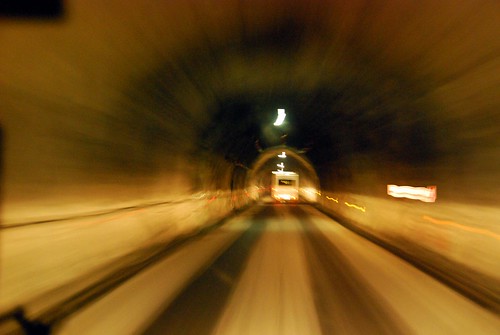
Driving through the Milford tunnel.
And finally, we arrived at Milford Sound. There are basically two things you can do in Milford: take a cruise around the Sound, or go on a hike. As I mentioned, it was raining pretty hard so the hike didn’t sound that appealing, but we also weren’t sure we should even bother with the cruise that day since the visibility might be poor. The nice gal at the info desk talked us into it though…she said, “There are two ways to see Milford Sound: in the bright sunshine and in the rain; and you haven’t seen Milford until you’ve seen it both ways.” Pretty good sales pitch because we totally ate it up and purchased our cruise tickets.
We bought our tickets through Cruize Milford (www.cruizemilford.co.nz/) because our Jucy van has a sticker advertising “buy one cruise ticket and get the second one free,” and we’re suckers for a good deal. It turned out to be a really excellent decision because not only is Cruize Milford the cheapest tour—NZ$55 per person (approx. US$35), so only NZ$55 for the both of us with our discount—but all the boats basically travel the same route so it would have been the same trip no matter what we paid. (Note: some boats that advertise longer cruises just take you into an extra cove). Plus, the Cruize Milford boat was quite intimate: there were were only about 20 people on the boat with us. Some of the other tour boats were absolutely enormous and we were glad we didn’t go with them.
Milford Sound is quite stunning in and of itself…I don’t think the pictures will do it justice, but these mountains were really tall. As Jeremy put it, “it’s like they flooded Yosemite.”
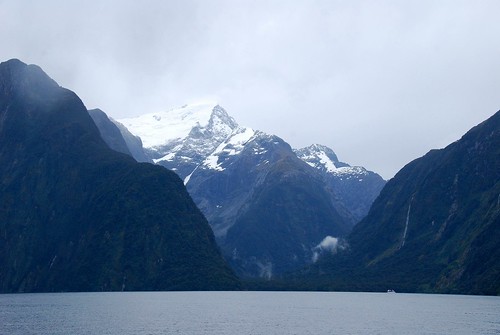
The tall peaks of Milford Sound…you can see a boat in the bottom right for scale.
Nerd alert!: we learned that Milford is technically not a sound but a fjord since it was created by glacial activity.
One advantage of seeing Milford while it’s raining is that the waterfalls are in full effect.
The other major advantage of touring during a storm (according to the info center lady, who was already very persuasive) is that the animal life is more active during this time. Maybe that was just a line that the i-Site lady fed us, but whatever, she was right. We saw seals:
Dolphins surfed the bow wake of the boat (btw, this was really magical):
And we even saw penguins (apparently somewhat rare)!
The cruise lasted about 1.5 hour and it was exactly the right amount of time and we saw exactly what we wanted to see. Definitely worth the trip out there!
On the way out we decided to camp for the night in a spot along a creek with those gorgeous wildflowers.
